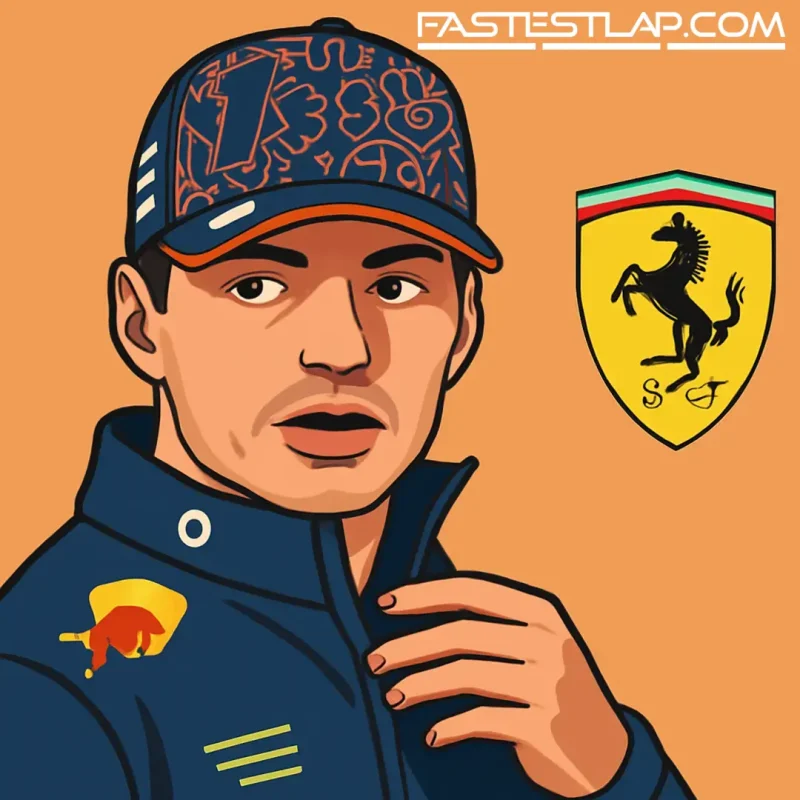Montoya’s map for Verstappen: Mercedes first, Ferrari later — if he moves at all
Every few weeks the Max-to-Ferrari carousel starts spinning again. This time it’s Juan Pablo Montoya giving it a push, and the Colombian’s take is more nuanced than the usual “stick him in red tomorrow” chorus. In Montoya’s view, Verstappen does end up at Maranello — just not yet, and not before a detour through Brackley.
“I think Max will drive the red car, but probably five or six years down the line,” Montoya said, adding he’d be “surprised” if Verstappen never leaves Red Bull unless the Milton Keynes juggernaut keeps delivering at an exceptional level. The “obvious next move,” he reckons, would be Mercedes. Then Ferrari.
It’s a tidy theory that matches the realities of Verstappen’s situation. The Dutchman is currently tied to Red Bull through the end of 2028, and while contracts aren’t handcuffs in Formula 1, that length — combined with the ongoing technical reset for 2026 — gives him time and leverage. If he leaves, it’ll be because the next era’s competitive picture forces a rethink. If Red Bull stays on top, why go?
What makes Montoya’s call interesting is what’s shifted around Verstappen. Mercedes, once the logical enemy, is also a logical landing spot. The post-Hamilton era is underway, and Toto Wolff has never been shy about playing the long game to secure the sport’s elite. If Verstappen wants a new challenge without the cultural earthquake of Italy, Mercedes is the straightest line.
Ferrari, of course, remains the romantic pull. Even Max’s father, Jos Verstappen, has kept the Scuderia in the conversation this year, saying the family talks about Ferrari, Mercedes and Red Bull — as you do when considering every plausible route to more silverware. And there’s precedent for a superstar using his gravity to bend an institution to his will. Eddie Irvine, who watched Michael Schumacher do exactly that, thinks Verstappen is the one driver on the grid today who could replicate that kind of revolution at Ferrari.
Irvine’s cautionary tale is aimed at Lewis Hamilton, who made the blockbuster switch to Ferrari for 2025. He believes Hamilton arrived “a bit too old,” and hopes Verstappen doesn’t wait as long if the Ferrari path is truly in his future. Whether you share Irvine’s view or not, his broader point echoes through the paddock: the longer you leave Ferrari, the less time you have to reshape it around you.
It’s worth remembering what that truly takes. Schumacher traded near-certain titles at Benetton for a Ferrari rebuild that took four seasons to pay off. He dragged talent with him, aligned the organization, and endured the fallow years. That’s the task Irvine thinks Verstappen could take on — if he wants it. But it’s a big if.
The version of Verstappen we’ve seen this season doesn’t scream restless. Montoya points out the calmer radio, the more measured edges. It’s the demeanor of a driver deep in his process, not one storming the exit. And for all the ever-present background noise about politics, power structures and who-reportedly-said-what inside Red Bull, the fact remains: Verstappen has the fastest way to win most Sundays sitting under him more often than not. When that’s true, you tend to stay seated.
There’s also the 2026 caveat. Everyone is gambling a little on how the new engine and aero package will reshuffle the deck. Red Bull-Ford will be measured against a resurgent Mercedes works program and Ferrari’s power unit push. That’s the window where aspirations meet spreadsheets. If Red Bull nails it, the conversation quietens. If they don’t, options get explored with more seriousness.
Ferrari’s own timeline complicates things. The team now fields Charles Leclerc and Hamilton, two massive talents with very different clocks. Leclerc is the long-term pillar, Hamilton the proven icon trying to make red history. If you’re planning a Verstappen arrival around 2030, as Montoya suggests, what does that Ferrari look like? Who’s leading it? And does Max want to bet his prime against Leclerc on Leclerc’s turf? Fascinating questions, all of them, and all the more reason why a Mercedes interlude might make sense if change ever comes.
Here’s the other angle: sometimes the most seismic move is not moving. Staying put can be a statement too, especially if Red Bull continues to deliver cars that let Verstappen be Verstappen. In that world, Ferrari remains the great what-if, Mercedes the missed opportunity, and history remembers a driver who built a dynasty where he began.
For now, Montoya’s crystal ball offers an entertaining roadmap without committing anyone to a date. Verstappen has the luxury of time and results, Red Bull has the burden of proving 2026 won’t loosen their grip, Mercedes has a grand plan to sell, and Ferrari has a habit of making the sport’s biggest stories feel inevitable — until they aren’t.
All of which means the carousel will keep turning. And Max, as always, will be right at the center, letting everyone else speculate while he goes racing.




